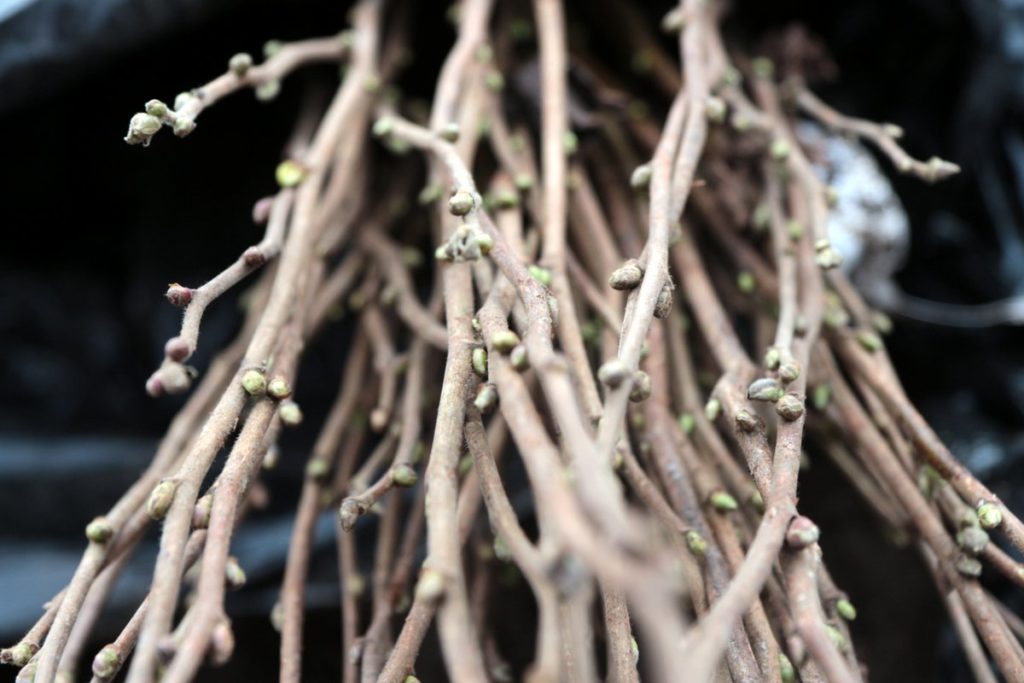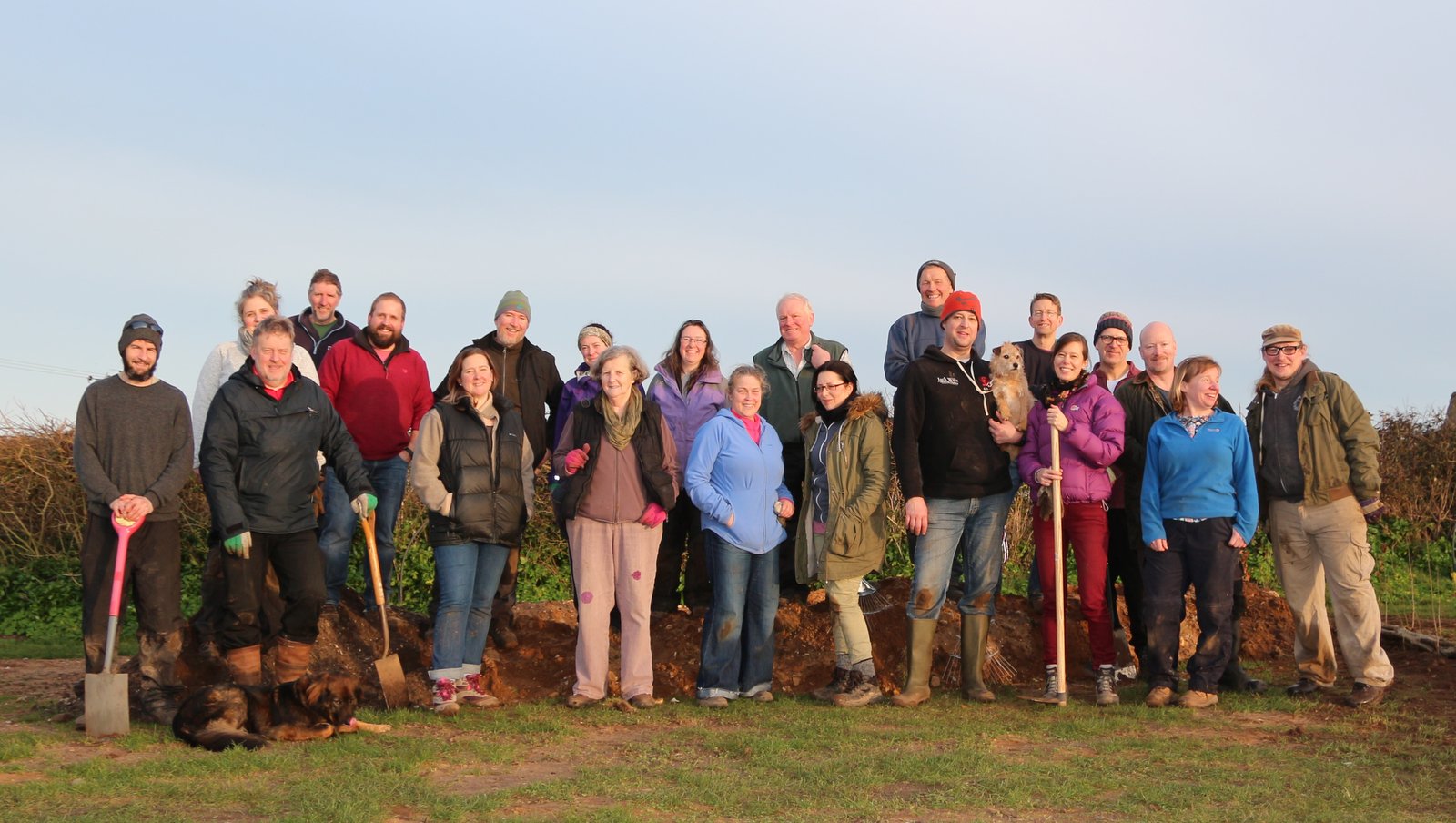How do you plant 3,000 hedging plants in a weekend? Easy. The answer is twenty-one good people, two dogs, a digger and lots of jacket potatoes.
OK there’s a bit more to it than that, but it really is incredible what a group of volunteers can achieve in a weekend.
This February’s was the second Conservation Weekend I ran with Jason Borthwick of Deepdale Backpackers and Camping. Deepdale sits on the North Norfolk coast overlooking Scolt Head Island and some beautiful salt marsh. Hundreds of geese fly overhead at sunset and the salt marsh sings with the calls of curlews. Deepdale Backpackers and Camping is on a working farm just across the road, with fields surrounding the campsite. Downs Woods is perched on a chalk escarpment at the top of a hill.
Back in 2015 I conducted a Preliminary Ecological Assessment of Downs Woods and gave some recommendations for management of the woodland, and since then we’ve been talking about how to do some great wildlife-friendly work on the farm, to make Deepdale an even more beautiful place for visitors. Jason, Chris Haycock and his team have recently taken over management of the backpackers and campsite and done a huge amount of work to update and improve the place.
In November of last year, our first Conservation Weekend saw us transplanting some young trees from Downs Wood to the campsite to fill in gaps in the hedges that had been left unmanaged for some time and had become gappy. We had been hoping to plant new hedges on the campsite, but the bare root whips we needed weren’t ready as the autumn had been so warm. Slender, young plants without branches, bare-root whips are delivered for planting in bundles with no soil around their roots, just polythene to keep the roots from drying out. Unless the plants have dropped their leaves, entering dormancy for winter, they aren’t safe to move when they’re so young and vulnerable.

By February however, the whips were ready so 3,000 of them were delivered to Deepdale. We went for a rich mix of native hedging species – hawthorn Crataegus monogyna as the backbone, with field maple Acer campestre, dog rose Rosa canina, hazel Corylus avellana, dogwood Cornus sanguinea and beech Fagus sylvatica. Jason also had a few potted trees to add in to the mix. This mix of hedging species nods to the hawthorn hedging in the surrounding countryside while adding a variety of stems, foliage and fruits to provide added interest in the campsite and screen pitches from each other, giving campers privacy and shelter. The mix of species is also great for wildlife, providing shelter and food for invertebrates, birds and small mammals.

The volunteers were rewarded for their work with accommodation, breakfast and dinner for the weekend, meeting on Friday evening in the sociable communal area of the backpackers. On the Friday evening I shared a brief history of hedgerows with the group – I’ve generally found that volunteers enjoy the work they’re doing more when they understand the history, context and benefit of the work they’re doing.

Over the course of the weekend, the Hedge Collective planted virtually all of the whips. Jason’s team saved a huge amount of time and effort by pre-digging trenches around 50cm wide with one of the farm tractors. Whips were planted in a double staggered row 50cm apart, which in time should contribute to thicker, bushier hedges. The team placed each plant, choosing random species alternating with hawthorn, firming it gently in before knocking the soil from the trench in around it. Logs from the woods were laid down the centre of the rows to clearly mark them out (though we understand that since the weekend, one camper was mortified to have driven their vehicle right through one of the new hedgerows).
To give the plants a better chance of getting established, before planting we dipped the roots of all of the whips in a gel containing mycorrhizal fungi – this acts as an extension to the plant’s own root system, exchanging sugars from the roots with moisture and nutrients from the soil and is recommended to aid establishment of young trees. Using the gel is a great way to ensure that the fungi are actually attached to the plant’s roots – they have to be in contact with the roots to work.

